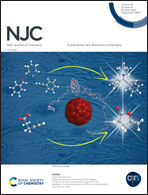3D silk fibroin/carbon nanotube array composite matrix for flexible solid-state supercapacitors†
Abstract
An aligned carbon-nanotube array has been identified as an ideal candidate for super-capacitor devices due to its high specific surface, regular pore structures and highly efficient ion transfer paths. However, poor mechanical strength and super hydrophobicity greatly impede its applications in the manipulation of the energy storage device. In this paper, we fabricate a robust flexible solid-state supercapacitor (FSC) device by using a silk fibroin incorporated 3D aligned carbon nanotube array (CNTA) composite matrix. We thoroughly investigate the effect of a silk fibroin scaffold as well as its carbonization product on the electrochemical properties of the composite devices. Compared with pure CNTA-based FSC devices, the mechanical strength as well as hydrophilicity of the CNTA@silk fibroin (CNTA@SF) composites are greatly enhanced. Meanwhile there is neither damage of the aligned structure of CNTA nor sacrifice of the volumetric capacitance of the device. Additionally, further carbonization of the CNTA@SF composites can generate a pyridine-type nitrogen doped CNTA (CNTA@C) hybrid thus further enhancing the electrochemical capacitance while still maintaining the original flexibility and hydrophilicity. The charge transfer resistance (Rct) of the CNTA@C-based device decreases about 40% (from 3 Ω to 1.8 Ω) and the volumetric specific capacitance increases to about 60% higher (from 126.8 mF cm−3 to 197.4 mF cm−3) compared with the initial. Meanwhile, excellent cyclic stability (2.9 mA cm−3, 10 000 cycles with a loss of less than 1%), good rate performance (from 0.58–5.8 mA cm−3, volumetric specific capacitance Cv retention stays at around 80%) as well as high energy density of 0.018 mW h cm−3 (with the power density of 0.46 mW cm−3) were successfully derived. Our approach thus reveals a new kind of robust 3D platform based on a carbon nanotube array and silk fibroin which has great potential for the design of biocompatible FSC devices as well as implantable electronics in the future.



 Please wait while we load your content...
Please wait while we load your content...